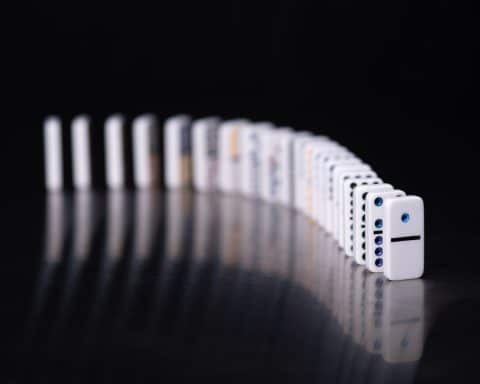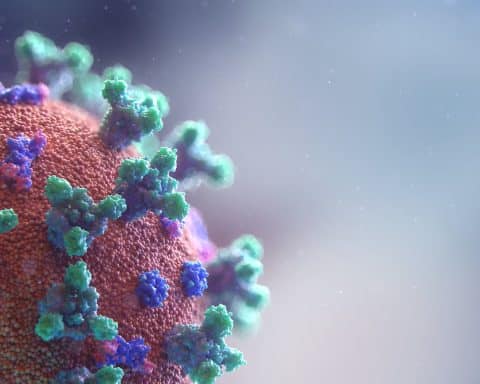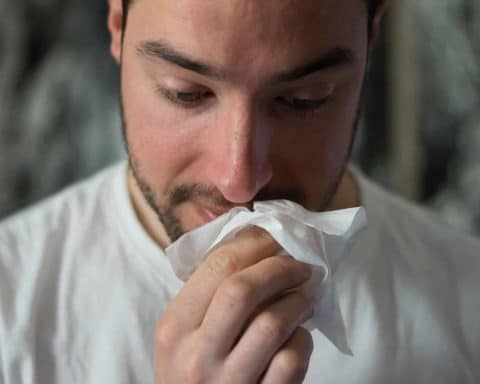Ambra Abate MD is an Italian doctor working at Ambulatorio Polispecialistico Casazza in northern Italy.
Our experience relates to a group practice of three doctors with a catchment of 1792 people each to the Trescore-Zandobbio (Bergamo, Lombardy, Italy) area.
The early days
We found that anosmic young adults (25-35 years-old) began to present at the beginning of January with an unrecognised flu-like illness lasting a few days during which they experienced fever and profound malaise. Older patients (aged 40-60 years-old) with mild to severe cases of COVID-19, had anosmia and loss of taste towards the end of the episode. Anosmia and loss of taste appeared to be indicators of late phase illness. This was an early indication that the disease may have already have been spread by healthy carriers with implications for policies of containment.
During the first week of the epidemic peak our approach was to triage every case by phone, avoiding all physical examinations. The clinical presentations were very similar, the number of cases extraordinarily high and we found that, within days, we could recognise and diagnose a COVID case, based only on clinical assessment by phone or videocalls. The following week, critical patients remained at home, managed with the help of the relatives. Sons, daughters, grandchildren — all in quarantine — provided nursing care at home supported by phone advice up to five times a day, on the administration of oxygen and other therapies. A personal finger pulse oximeter has been necessary in managing cases by phone, especially if oxygen is administered. Videocalls, where possible, help to better assess the patient’s situation. Drug prescriptions were sent to the pharmacies and the drugs delivered by voluntary workers.
During the second week of epidemic peak we spaced out the absolutely needed home visits to bedbound patients. Obsessive disinfection of every surface and items of frequent use helped in keeping the viral load low. During the first week, no blood work has been possible. During the second week, only the very urgent ones have been obtained by nurses sent to the patient’s home.
The three clinical types of COVID-19 we have seen
COVID-19 presents in three forms. The most common (about 80% of all cases) affects the respiratory system. Patients often report a single day of fever and mild diarrhoea 5-10 days before the respiratory symptoms. The initial symptoms may include rhinitis, pharyngitis, mild dyspnoea described as “a weight in the middle of the chest” that worsens in the evening, a mildly productive cough that becomes unproductive and very bothersome, malaise, dyspnoea with lowering of oxygen saturations, and tachypnoea. Patients recovering from the mild to severe form of COVID-19 often develop symptoms of post-traumatic stress disorder with an intense fear of sleeping, and fear of relapse due to the recurrent fever, long-lasting cough and chest discomfort.
The COVID-19 gastrointestinal form (15% of all cases) is usually milder with anorexia, nausea and mild diarrhoea. They may have mild fever but severe weakness. It lasts about 10-15 days with rapid recovery. In a minority of cases, anorexia and respiratory symptoms coexist but generally only in moderate or severe cases.
The third manifestation of COVID-19 is neurological (5%). Patients have fever, malaise, anorexia, early anosmia and severe headache that is severe (5-7 on a 1-10 subjective scale) and persistent lasting 5-10 days. The headache does not respond to NSAIDs. Mild neurological symptoms (tremors, somnambulism, panic attacks, lypothymia, insomnia) may be present. Rarely, this progresses with sudden desaturation.
COVID-19, immunity, and pulmonary oedema
COVID-19 is a multiphasic disease that reflects the complex interaction between COV-19 and the host immune system. (1) Well established risk factors to a severe form are a history of myocardial infarction (2), diabetes, obesity, metabolic syndrome, long lasting hypercholesterolemia, old age and male sex (3). It’s worth remembering here that almost 25% of pregnant women have a high risk of complications during COVID-19.(4) The pathophysiology can be understood in light of the immunosuppressive and immune-evasive abilities of COV-19. The latter are still to be studied. COV-19 enters the body via the respiratory or the gastrointestinal route.
We found that acetazolamide, 200 mg once a day, gives relief to the dry cough for COVID-19 patients and improves saturation.
A competent mucosal immune defense could explain the rhinitis/pharyngitis cases and if the immune system is able to cope with the systemic viral load there may be a low to moderate fever.(6) Remission begins when specific IgM and IgG are produced, between the 10th and the 18th day from the first day of fever.
Due to COV-19 trophism for the ACE2 receptor expressed on the endothelium of the lungs and cytotoxic activity of the virus, there may be variable degrees of perivascular oedema even in the absence of radiographic evidence of ground glass opacities or pneumonia. Although of different aetiology, the physiopathology of COV-19 pneumonia resembles pulmonary oedema due to high altitude.(7) Following this line of reasoning, we found that acetazolamide, 200 mg once a day, gives relief to the dry cough for COVID-19 patients and improves saturation.
Patients with moderate forms and myocardial impairment are at risk in the 3-5 days following the end of the fever, often experiencing a dyspnoeic crisis requiring hospitalisation or sudden death.
Graphical representations of the timeline of COVID-19 respiratory forms evolution based on my experience and of the interrelations with the immune system of the three COVID-19 clinic forms are available on request. (Contact: ambrabate@hotmail.com)






